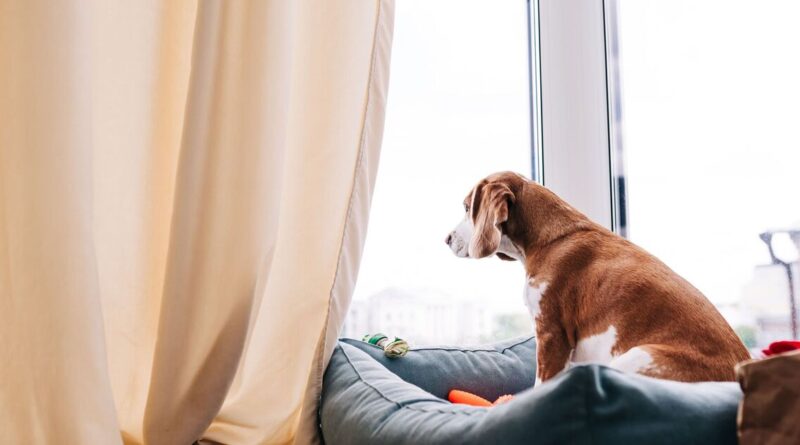Dog expert shares 5 things that will ease separation anxiety
Leaving your dog home alone can be heartbreaking especially as September has come and it’s back to the school routine and with families suddenly spending less time at home, many dogs are left wondering why their favourite humans have disappeared for hours each day. For some dogs, this sudden change in routine can trigger separation anxiety, leading to unwanted behaviours like barking, whining, destructive chewing, or even attempts to escape.
Just like humans, dogs thrive on consistency and connection. When their environment shifts without warning, it can be deeply unsettling. According to the RSPCA, 8 out of 10 dogs find it difficult to cope when they are left home alone. Fortunately, a dog expert, Rachel M. from PetGuide.com has shared five simple but effective ways to help ease this anxiety and make the transition smoother for both you and your beloved pet.

1. Calm goodbye routine
One of the best things you can do is to establish a consistent, low-key departure routine, the expert said. Dogs are incredibly observant and quickly learn to associate certain actions like grabbing your keys or putting on your coat with being left behind.
By practicing short, calm departures at first without actually leaving and by using simple verbal cues like “be right back,” you can also help your dog feel more at ease with your comings and goings. Avoid emotional goodbyes or overly enthusiastic greetings, as these can reinforce anxiety instead of reducing it.
(Image: Getty)

2. Distractions
Another helpful tactic is keeping your dog mentally engaged during your absence. Boredom often amplifies anxiety, so offering long-lasting distractions can work wonders.
The dog expert said treat-dispensing toys, such as KONGs filled with dog-safe peanut butter or frozen yogurt, can hold your dog’s attention for extended periods.
Puzzle toys and snuffle mats that encourage sniffing and problem-solving can also shift their focus away from your absence and turn alone time into a rewarding experience.
(Image: Getty)

3. Desensitisation training
For dogs with more intense anxiety, gradual desensitisation can be really helpful as well. This process involves slowly increasing the time your dog spends alone, beginning with just a few minutes and building up as they show more comfort and confidence.
Start by stepping outside for a minute or two, then come back inside before your dog has the chance to become distressed. Over time, these practices should become longer and less stressful. Always reward your dog’s calm behaviour with a treat or gentle praise to reinforce positive associations with being alone.
(Image: Getty)

4. Make a comfortable space
Creating a comforting environment is really important. Some dogs feel secure in a crate, while others may prefer a gated-off area with familiar items. Include their favourite bed, some toys, and even an item of your clothing to provide your scent while you’re away.
Soft music, white noise machines, or even playlists designed specifically for dogs can add a sense of calm and mask outside noises that might otherwise startle them.
This will helps build a positive link between their space and feelings of security.
(Image: Getty)





